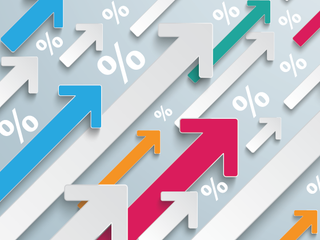Summary
Americans’ use of credit cards surged ahead to a record for seasonally adjusted credit card purchase volumes, according to the ABA. But it’s not necessarily ominous news. The share of cardholders who pay off their balance every month rose, and those that carry a balance fell.
The content on this page is accurate as of the posting date; however, some of our partner offers may have expired. Please review our list of best credit cards, or use our CardMatch™ tool to find cards matched to your needs.
After subsiding in the first quarter of this year, Americans’ use of credit cards not only regained lost ground in Q2, but surged ahead to a record for seasonally adjusted credit card purchase volumes, according to the American Bankers Association.
But it’s not necessarily ominous news. The share of cardholders who pay off their balance every month rose, those that carry a balance fell and the share of Americans’ disposable income going to card debt has remained flat for six years now.
Every three months since the start of 2008, the American Bankers Association has taken the collective pulse of U.S. credit card holders to publish its Credit Card Market Monitor report. Its latest quarterly installment presents card data from April through June 2019.
Purchase volumes are defined as the dollars spent on new card expenditures, and in 2019’s second quarter, Americans charged more than $1.3 trillion dollars to their card accounts, continuing a relatively steady climb since the Great Recession. Compared to the prior year, 2019’s second quarter purchase volumes were up about 4 percent.
See related: Best and worst states for managing money: South Dakota ranks No. 1
During the financial crisis, purchase volumes sat between $700-750 billion dollars per quarter. Ten years later, purchases are approaching twice the volume of the recession’s low point: $712 billion in 2008’s Q4.
The ABA’s Q2 data also revealed that those who pay their monthly balance in full each month, called transactors, rose a percentage point to 31.1 percent of the cardholder universe — the highest level since ABA began tracking in 2008.
Conversely, those who carry a monthly balance, called revolvers, fell 1.3 percentage points to 43.2 percent of U.S. cardholders, the lowest level in two years.
When looking at credit card debt as a share of Americans’ disposable income, Q2’s seasonally adjusted reading of 5.3 percent is not only equal to 2018 levels but is essentially unchanged over the past six years.
The ABA’s Credit Card Market Monitor is based on card data drawn from a nationally representative sample provided by Argus Information Services LLC. The Q2 report was released Nov. 4.
Editorial Disclaimer
The editorial content on this page is based solely on the objective assessment of our writers and is not driven by advertising dollars. It has not been provided or commissioned by the credit card issuers. However, we may receive compensation when you click on links to products from our partners.


